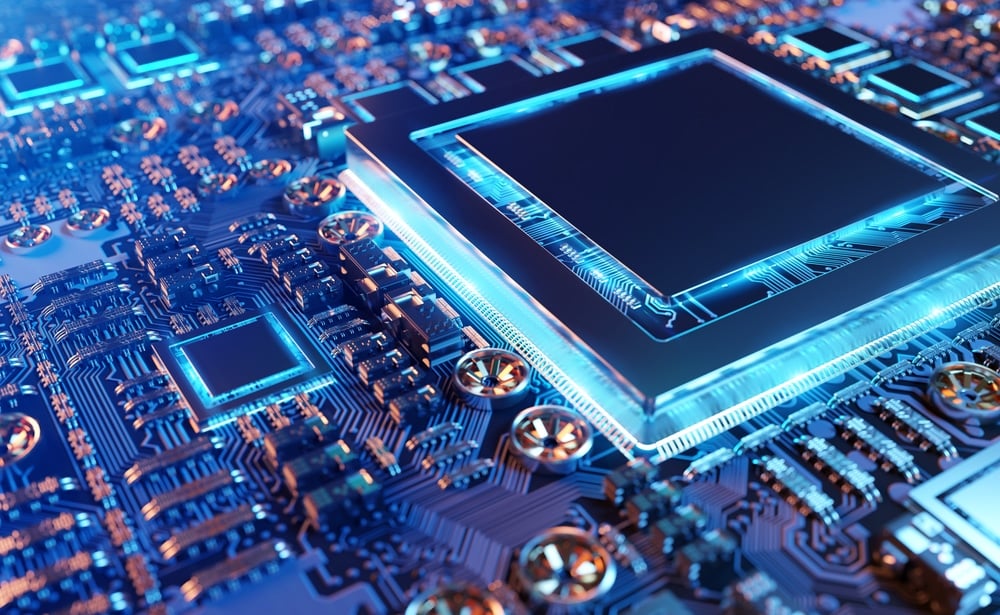What we think about NVIDIA (NVDA)
NVIDIA in Three Words: “AI Factories”, Innovation
Breaking Update: NVIDIA's stock sold off 20% on Jan 27 on news that China-based DeepSeek had developed a much more computationally-efficient way to train its AI models..

Discuss NVIDIA in our Community Forum
Background
Nvidia primarily designs Graphics Processing Units (GPUs) – specialized computer processors that are extremely efficient at running tasks that can be executed in parallel – a category of processing that includes machine learning and artificial intelligence (ML/AI).
Nvidia uses its GPU technology, plus the network interconnects, software, algorithms, systems, and services it creates, to accelerate computing in four key markets:
- Gaming – GPUs and sophisticated software to enhance the gaming experience with smooth high-quality graphics including ray tracing technology for real-time, cinematic-quality rendering. This segment has suffered severe revenue contraction in recent months as the company aligns existing inventory levels with reduced demand resulting from lower consumer discretionary spending and the impact of changes in the cryptocurrency mining market.
- Data Center – Nvidia-powered next-generation data centers are becoming the “AI factories” of the future, accelerating machine learning and deep learning workloads to train and refine AI models. Data Center is now the largest revenue generator for Nvidia, albeit, in the most recent quarter, the US government announced restrictions on the export of A100 and H100 products to China, slowing segment revenue growth.
- Professional Visualization – Nvidia Omniverse virtual world simulation and collaboration platform for 3D workflows (including VR and AR) are being incorporated into enterprise applications, including virtual car showrooms, surgical training, and architectural walkthroughs.
- Automotive – Nvidia DRIVE autonomous driving platform is already powering three dozen electric vehicle makers building autonomous vehicles with an expansive design win pipeline over the next six years. This segment includes the Nvidia Isaac platform for industrial robots used by over 700 customers and partners to develop robots for e-commerce fulfilment, retail automation, cleaning, and last-mile delivery; and also, Nvidia Clara Holoscan for AI-powered medical systems for next-generation robotic imaging and surgical instruments.
Conviction Rating Changes
Join 7investing to get access to this section
Recent Company Updates
Join 7investing to get access to this section
January 28, 2025: If we're being honest with ourselves, I think we're all in a state of shock over DeepSeek's recent announcement.
DeepSeek's R1 model requires significantly less computing to train its AI. That means fewer processors and less money spent on infrastructure.
Bad timing for NVIDIA. And yet that timing is not a coincidence.
Just one week ago, on January 21, NVIDIA announced it was teaming up with OpenAI, Oracle, ARM Holdings, Microsoft, Softbank, and MGX and would deploy $500 billion to launch "Project Stargate"
Stargate would run OpenAI's models, powered by Microsoft Azure's cloud infrastructure, built upon NVIDIA's GPU processors.
But suddenly there's a wrench thrown into this strategic plan that would have global significance. It's the software, not the hardware, that is making DeepSeek so efficient.
US tech companies can announce as many half-trillion dollar initiatives as they want. The US government can impose as many trade tariffs against China on GPU chips or lithography equipment as it wants.
But it's DeepSeek's ability to re-engineer the core AI models that's making it so successful. They're doing less with more.
So if the custom chips gets commoditized and then the custom AI models get commoditized, then it becomes those who own the best data that will control the future.
"BS in, BS out." Even a fantastic and efficient model that's trained on bad data will still produce a poor result.
The winners will be those who own great data and can now train AI to harness it more efficiently.
Data privacy and regulations now become even more important. How much are we comfortable sharing with Facebook, with Amazon, with Google, with TikTok, or with any of the other massive data factories that have found their way into our daily lives? And what government-mandated biases will purposely influence the outputs of the models?
Now we watch to see how the world reacts. Don't forget that many tech companies including Google had been working on AI for years. But it was OpenAI who released GPT to the public and attracted 1 million users within just 5 days and then 100 million users within just 2 months.
Another sea change appears to be coming in 2025.



